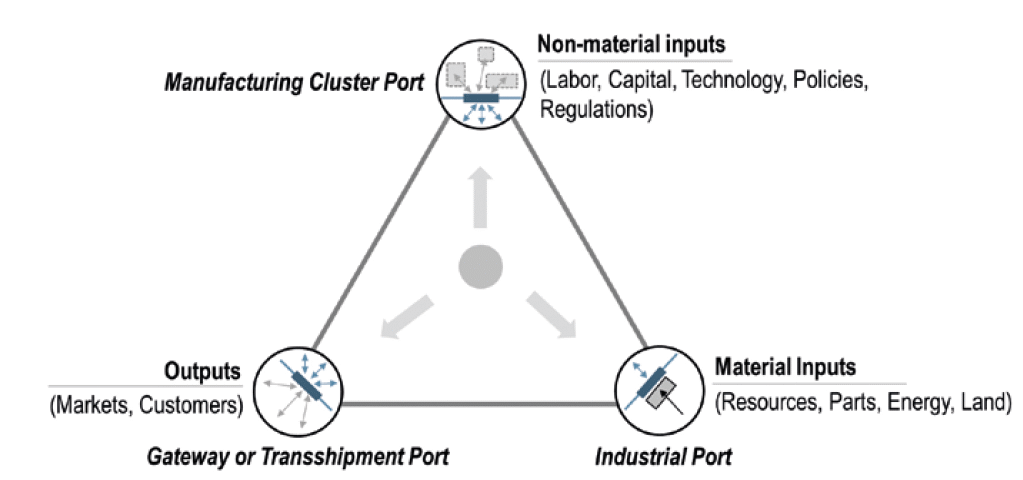The association between ports and manufacturing has constantly evolved through technological and economic changes. Prior to containerization, there were strong linkages between ports and heavy industrial activities, and indirectly with lighter forms of manufacturing. Many ports were a combination of commercial and warehousing activities requiring a large amount of labour, while other ports focused on transshipping bulk commodities with the related heavy industrial activities.
Manufacturing activities are influenced in their locational choices by three main categories of factors with each activity having different considerations for ports:
- The first are the material inputs of manufacturing such as energy, raw materials and land, which is associated with industrial ports
- The second concerns the non-material inputs of manufacturing such as labour and regulations, which is associated with manufacturing cluster ports
- The third involves the outputs of manufacturing such as its markets and customers, which is associated with gateway or transshipment ports
Read PortEconomics member Jean-Paul Rodrigue full article-first published @Port Technology International- by following the link.












